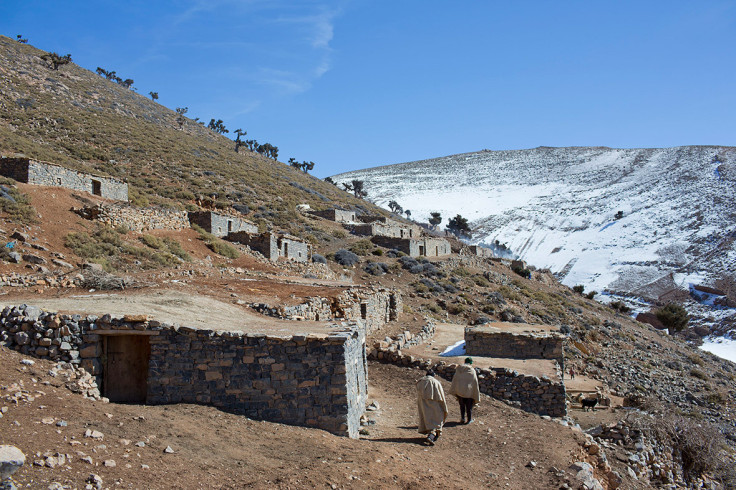Islamic State: Could Morocco be the next target for Isis or Al Qaeda jihadis in north Africa?

Following the recent attacks in Tunisia, Morocco's vulnerability to terrorism is gaining renewed attention. In some ways we can look to Tunisia's jihadist cell activity as the older brother to the parallel Moroccan problem. Organized jihadist group presence in Tunisia and Morocco shows concerning similarities.
The overwhelming majority of North African fighters in Syria and Iraq are mainly from Tunisia and Morocco and these fighters have shown a willingness to be used in front lines, not only as suicide bombers but also taking the lead in local brigades.
Certainly a successful attack on Moroccan soil would be the aim for any group in the region. However, even an unsuccessful attack would be their first step in achieving their strategic goals.
Both the governments of Tunisia and Morocco have referred to a concerning number of trained fighters returning to Morocco and both countries have a history of an organised jihadi presence and are dismantling cell structures at an alarming rate.
Finally, both countries have urban areas with high unemployment especially among the youth, who are most at risk of radical behaviour, resulting in criticism against the governments and seeking ways of securing income.
All that said, Morocco and Tunisia are not identical twins when it comes to countering jihadist activity. The Moroccan government has taken a much more strict, often uncompromising, counterterrorism strategy, while Tunisia has been accused of a more lenient approach.
For example, Ansar al-Sharia in Tunisia (AST) was allowed the freedom to expand after the Arab Spring in that country. The Moroccan monarchy took a proactive approach by moderating the Malikiti ideology by deploying imams to more than 50,000 mosques to counter extremist propaganda.
Even with their proactive approach, Morocco's vulnerability to acts of terrorism remains. Not only is Islamic State's campaign of expanding its presence in North Africa active but al Qaeda aligned groups and organised cells also remain a constant threat. The threat is accentuated by a call from IS (Isis) to sleeper cells to take action in areas of where they are present rather than moving to Syria or Libya (Reported by Akhbar Al Yaoum on 20 March 2015).
Other important indicators are foreign fighters returning to Libya, closer and more immediate cooperation between terror networks, and the fact that the main jihadist groups openly call on networks to engage in attacks and IS's carving out areas of control beyond Syria and Iraq.
Equally, several factors create a conducive environment not only for recruitment, but the formation of cell networks.
Firstly, the presence of Wahhabi ideology that is opposed to a more "moderate" Sufi Islam practised in most North Africa states. A moderating factor is the presence of the monarchy which is central to a predominant moderate Malikite worship tradition.
Secondly, socio-economic factors, with most of the Moroccan fighters coming from the northern areas, known for high levels of unemployment. IS offers employment opportunities. Rumours of compensation for Moroccan fighters have been as high as $2,000 (£1,280, €1,840) to $3,000 (£1,919, €2,765) per month, with added monthly premiums, that include $200 when the fighter is married and $50 per child when he is a father.
Thirdly, Morocco's close proximity to southern Europe eases collaboration between existing networks, including recruitment cells. In 2014, IS launched a campaign on social networks stating its objective to control Al-Andalus (the Arabic name for parts of Spain, Portugal and France that were occupied by Muslim conquerors from 711 to 1492).
Due to its geographical proximity, Morocco is the ideal conduit in expanding its presence in these areas. The exploitation of this proximity has been demonstrated in the high level of cell activity. On 14 August 2014, a nine-member cell active in Morocco and not far from the Spanish enclave of Ceuta was dismantled.
According to Moroccan authorities, the members had interaction with similar networks in Ceuta where they received training in weapons handling, use of explosive devices and car theft. These cells are indicative of IS targeting Morocco, with cell networks the preference of choice.
Though IS typically thrives in areas where the government is weak, which is not the case in Morocco, the jihadist environment will rely on IS to execute specific attacks. Even if the attacks are largely unsuccessful, the IS will spread a message of a Moroccan government not able to counter its expansion.
Fourthly, recruitment cells are targeting specific individuals for radicalisation and assisting in travelling arrangements. According to the Moroccan government, roughly 124 terror cells have been dismantled since 2002. The dismantling of cells in January 2015 (active in Meknes, El Hajeb and Al Hoceima) and in March 2015 (following counterterrorism operations in Agadir in south-west Morocco, Marrakesh, Boujad, Tangiers, Ain Harrouda and in the Western Sahara) are only two examples that indicate the continued presence of organized structures.
Finally, al Qaeda in the Lands of the Islamic Maghreb (AQIM) presence in the region adds to concerns that attacks in Morocco could become an option of choice to prove that the group is undeterred by the counterterrorism operations.
Certainly a successful attack on Moroccan soil would be the aim for any group in the region. However, even an unsuccessful attack would be their first step in achieving their strategic goals.
Veryan Khan and Jasmine Opperman are senior directors for the Terrorism Research & Analysis Consortium (TRAC), one of the world's largest electronic compendiums for data and analysis of terrorist groups, activities, trends and up to date developments. For complete information see www.trackingterrorism.org and follow the group on Twitter @TRACterrorism.
© Copyright IBTimes 2025. All rights reserved.





















